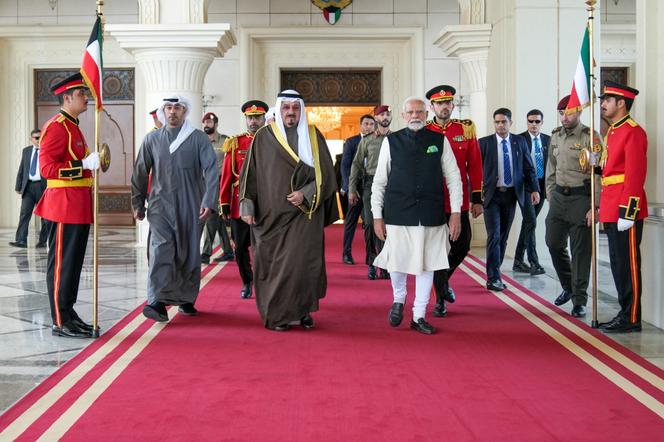


Realpolitik ignores paradoxes. On Sunday, December 22, Indian Prime Minister Narendra Modi received Kuwait's highest honor, the Order of Mubarak Al-Kabir, from Kuwait's Prime Minister, Sheikh Ahmad Abdullah Al-Ahmad Al-Sabah. The Hindu nationalist, who pursues an openly Islamophobic policy in India, was completing a historic visit to this country, 85% of whose population is Muslim. The trip, the first by an Indian leader in 43 years, marks a new stage in Indian diplomacy's strategic focus on the Gulf states. Since coming to power in 2014, Modi has not neglected any of the Persian Gulf states. A visit to Kuwait, scheduled for 2022, was postponed due to the Covid-19 pandemic.
New Delhi has made the Middle East a full part of its "extended neighborhood" policy, extending to defense matters exchanges previously confined to energy and trade. Its priority is to attract investment to stimulate domestic economic growth, address maritime security concerns and strengthen his influence in the region.
Saudi Arabia and the United Arab Emirates, its two most important partners in the region, have announced investment targets in India of $100 billion and $75 billion respectively. In addition to being the first destination for Indian workers, the United Arab Emirates is now India's third-largest trading partner, with bilateral trade worth almost $84 billion. The Indian community represents 30% of the population. "Few other Indian relationships have changed as dramatically as Delhi's ties with the Arab Gulf states over the past decade," said Raja Mohan, a specialist in Indian diplomacy.
You have 75.67% of this article left to read. The rest is for subscribers only.
